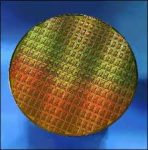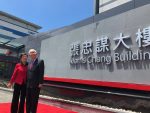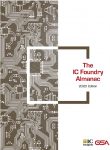Samsung is warming up and spending again
Samsung gave its preliminary report for Q4 and it was well better than prior muted expectations. It doesn’t take long for Samsung’s business units to respond to business trends in either direction and we have already heard of increased spending plans on the part of Samsung.
Samsung has not been shy about spending and has even spent to excess as 2018 bore out. Samsung is equally not shy about cutting spending when the industry slows. We have heard that Samsung has already started to spend even though the recovery in memory is still in early stages and DRAM is well behind NAND in terms of a recovery.
Obviously this is the Wayne Gretzky philosophy of “skate to where the puck is going, not where it has been”. Samsung is trying to get out in front of an expected memory uptick.
This is despite the fact that we have a ton of excess capacity in idled tools sitting around waiting to be turned back on which could easily satisfy increasing demand.
We think that part of Samsung’s spend is more focused on technology rather than pure capacity spend. Samsung has always tried to best its competitors by staying ahead of the cost/technology curve and one way to lead the way out of the memory slow down would be to have an ability to make money at pricing levels that competitors lose money at.
We certainly don’t expect the “drunken sailor” level of spend that Samsung exhibited in 2018 but rather more focused and cautious spend with a technology leaning.
Will Samsung’s spend offset an eventual TSMC decline? As we have previously mentioned, many times, TSMC is a “seasonal” spender focused on getting to the next node in time for Apple’s fall launch of new Iphones. This means that new tools an technology gets ordered and shipped in Q4 and Q1 to iron out the process in Q2 and ramp production in Q3 for the fall launch. We are currently in the midst of a big seasonal spend cycle for TSMC getting its 5NM act together. It is TSMC’s Q4 spend hockey stick that has gotten the equipment industry off the bottom of the cycle.
But all good things come to an end in this most cyclical of industries and TSMC’s spend will likely slow a bit after Q1 as it focuses its efforts on ramping up all that shiny new equipment for 5NM. The real question is will Samsung’s spending ramp offset the expected slowing of TSMC? Probably yes…
We also expect a bit of share shift as memory based spend is obviously very different from logic/foundry spend.
BIS – Little known government agency may prove impactfull
Most people don’t know who or what BIS is. It is a government agency whose acronym BIS stands for “Bureau of Industry & Security”.
With the recent revelation about behind the scenes US pressure on ASML it is clear the government is using an old tool to combat China in the semiconductor industry and that is “national security”.
Its clear that the trade deal has little to no IP protection in it so other means will have to be used to limit the technology flow.
We have suggested that we will likely see more involvement from the government in the form of export licenses/export controls and other methods that are not tariff based.
The mission statement of BIS- “Advance U.S. national security, foreign policy, and economic objectives by ensuring an effective export control and treaty compliance system and promoting continued U.S. strategic technology leadership.”- seems tailor made to be an alternative method to achieve goals that the trade deal didn’t.
We expect to hear more from companies over the next few quarters as the government gets more involved in the regulatory side of trade with China, especially, obviously, in tech.
With think ASML is both the tip of the iceberg and beginning of new phase of government involvement.
While we don’t expect an embargo, we could easily see more scrutiny, more export license issues, denial of export licenses or delays that may impact tech exports to China without an “overt” action.
What will companies report about Q4?
We think companies will generally be more positive. Reports of end product sales have been good. CES 2020 has been very positive and trade concerns have fallen by the wayside.
Memory is getting better. Tech stocks are doing great. Everything is happy. This is all despite the fact that we are going into a seasonally weak Q1.
In general, companies are not likely to “fight the tape” and will likely talk about the improving environment going forward, probably more so because perceived potential risks are reduced.
2019 wasn’t as bad as it otherwise could have been
At one point, chip equipment companies were looking at a 20% down year versus 2017/18 given memory’s cliff dive. TSMC coming through at the end of the year looks to have limited the downside to a lot less, perhaps on down 10% or so.
The downturn lasted about 4 to 5 quarters spanning the second half of 2018 and first 3 quarters or so of 2019. The downturn spanning over two fiscal years rather than focused in one year has mitigated the absolute differential between peak and trough revenues.
Early reports great – Ichor is Punxsutawney Phil that throws no shade
Ichor, one of our favorite sub suppliers to the industry, just pre-announced a great Q4 and an excellent Q1 guide. This obviously bodes very well for both Lam and Applied the two biggest customers of Ichor.
Its not hard to extrapolate that Lam and Applied should have equally great reports – driven by both TSMC and the start of Samsung spend.
Ichor, being a sub-supplier in a cyclical industry is obviously highly levered to the cyclicality and will see even more leverage to the upside than their customers.
The company management has done a great job of acquisitions throughout the cycle and will likely see full benefit in the coming upcycle. It also takes keen management to navigate the downcycle as well as Ichor has, and they have down a great job managing costs and Ichor is clearly a harbinger of good things coming to the industry.
The stocks
Lam and Applied (and of course Ichor) could easily be bought from the Ichor news. We would also suggest MKS and AEIS as well as UCTT. Right now the news out of Q4 wiil be very good with Q1 outlook equally good so we see reduced downside in the near term for most of the stocks.








